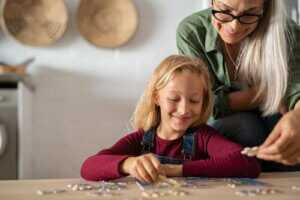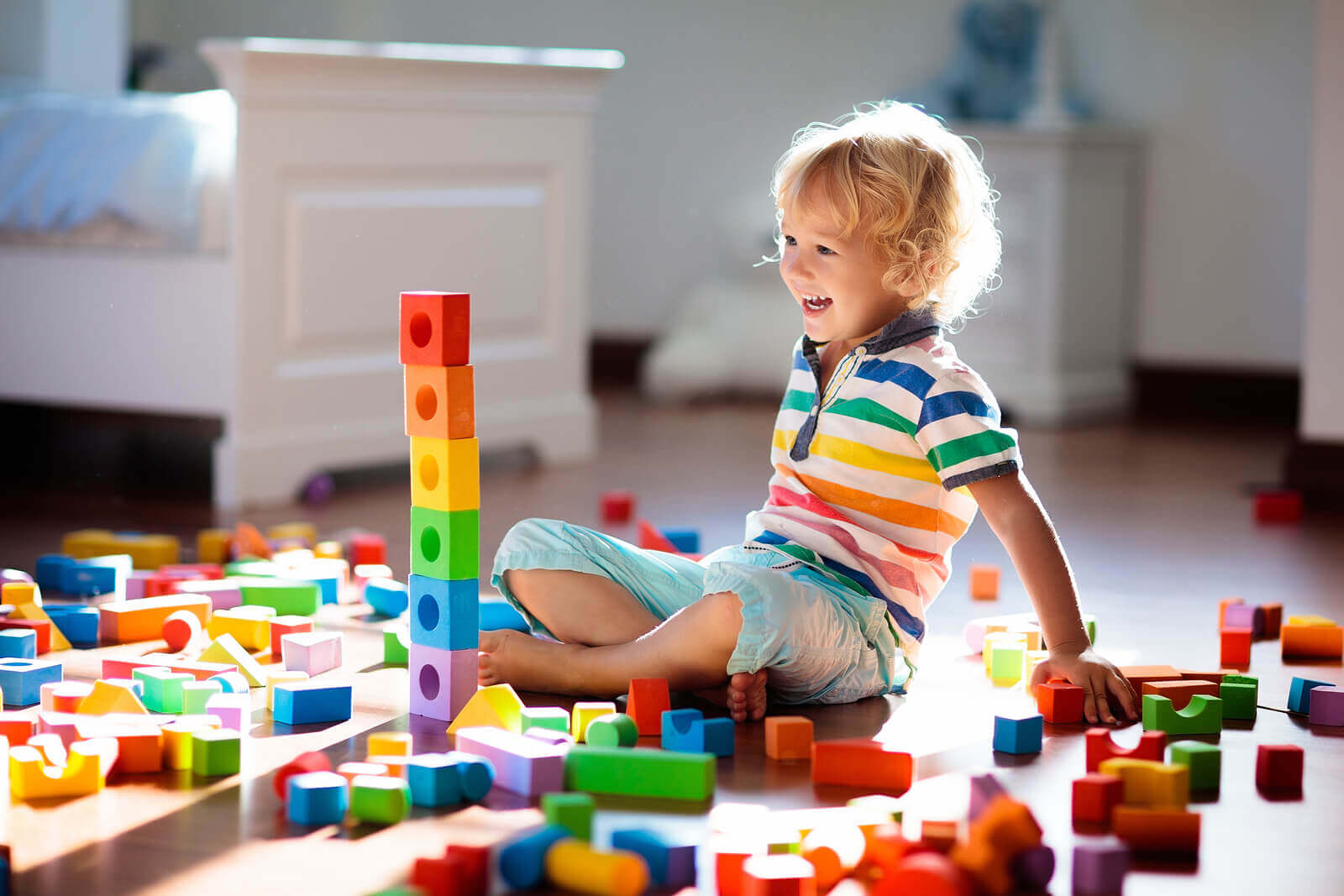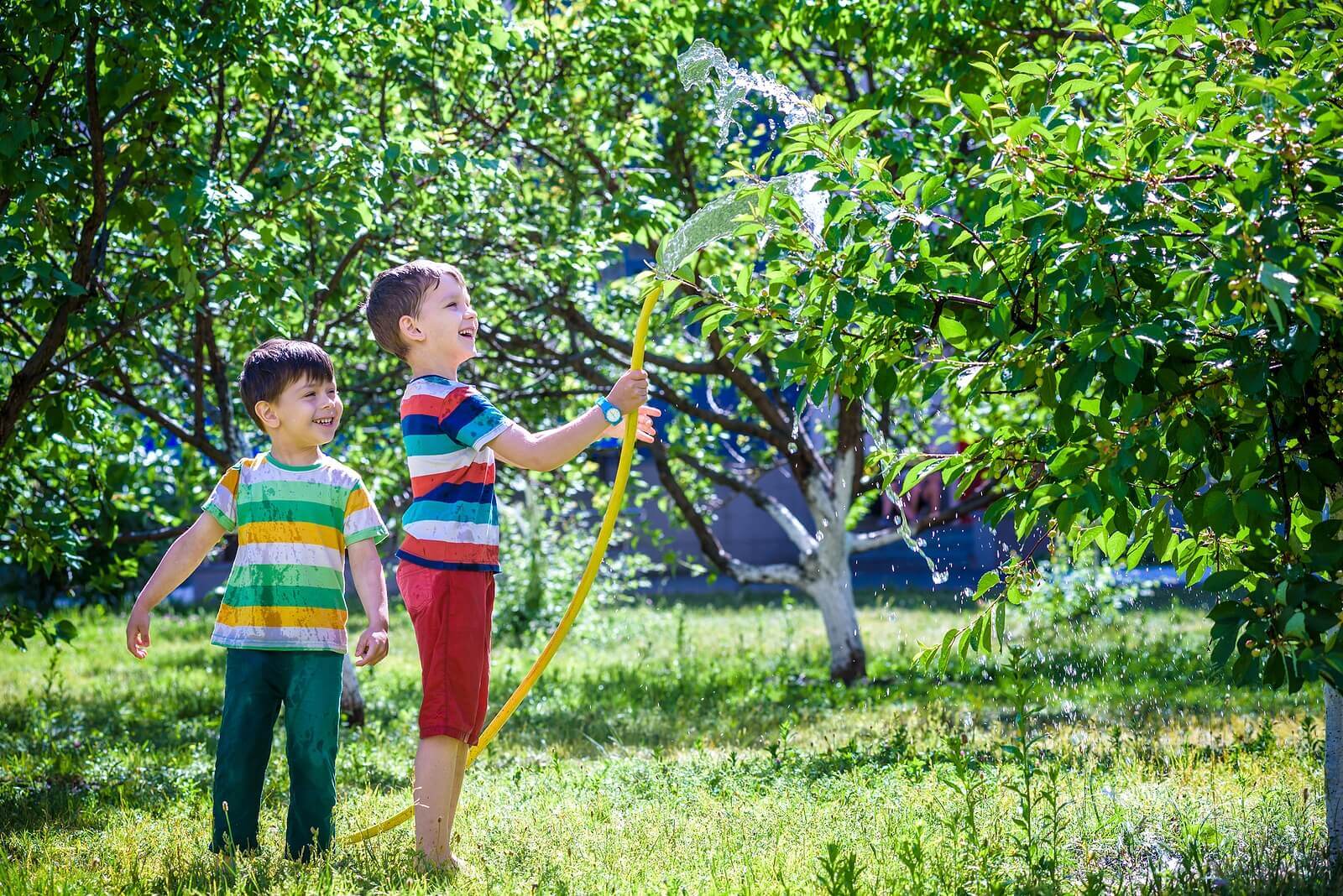Creative Games and Their Importance for Children


Written and verified by the psychopedagogue María José Roldán
In order to learn, children need to play and have fun. What’s more, games that promote children’s creativity and imagination are beneficial for their proper development. As a parent, you should know what creative games are and why they’re so important.
Furthermore, you should offer your children creative games because you’ll be helping them in their development. They’ll grow up happy and feeling that learning doesn’t have to be boring – in fact, quite the opposite. Playing is the best way to learn.
Creative games during childhood
Creative games allow children to have fun while developing a range of important abilities. In the process, children will acquire essential skills for academic learning and social development.

“Creativity is intelligence having fun”
– Albert Einstein –
The importance of creative games
Mother nature has designed the action of playing games as a means to grow and mature. Animals are playful by nature; babies enjoy playing games, too. So, it’s important for you to understand the value of fun activities and to promote creative games as a routine for your children’s development.
Being creative from an early age is very important for children. Creativity is about inventing, designing and trying new things, while having fun. Parents can motivate children to live new experiences in a safe environment. Thus, they’ll develop by carrying out all kinds of activities.
Different types of creative games
There’re many options when talking about creative games, since they can help in many areas of children’s development. Once you realize what creative games are, you’ll start seeing them as everyday opportunities.
When you start thinking creatively, you’ll begin noticing the many areas in which you can carry out these activities. The key areas in children’s development can be improved by putting this into practice. So, you have to start thinking and associating creative ideas to these aspects: physical, emotional, social and cognitive.
Children’s creative minds wake up through sensory stimuli: touch, taste, hearing, smell, and sight or vision of the world that surrounds them. Then, you should provide opportunities for children to develop their creativity, since it’s an essential part of their upbringing. Playing is feasible and simple in every possible situation.
Examples of creative games
So, now that you understand the theory behind creative games, what about some practice? Next, you’ll see how, where, with whom, what and when creative games should be carried out. A huge part of creative games comes naturally. However, you can create a fun and creative environment for your children.
Here you’ll find some examples of ways in which you can set up these creative environments for your children and the whole family. Don’t miss any detail and let your creativity fly!
Outdoor spaces
You can promote creative games in outdoor spaces by climbing, crawling, running, jumping… Work on those gross motor skills as much as you can!
Prepare obstacle-course races using chairs, ottomans, wooden boards and plastic cones. Your garden can also be a good place for your children to work on the plants and learn the wonders of nature.
In fact, gardening is perfect for them to be in contact with nature. Children can decorate flowerpots or, if you have enough space, they can make a fairy garden. In case you don’t have a garden, you can use your kitchen or balcony to make your own family orchard.

The kitchen
You can be very creative in the kitchen! The whole family can bake cookies and decorate them. You can also bake cupcakes. Children love touching, tasting, smelling and preparing delicious food. Besides working on their creativity, they’ll be truly happy when tasting what they’ve cooked with your help.
Older children can also weigh and measure ingredients while making light meals and salads. As a result, the kitchen can become a melting pot of creativity. You just have to find the right tools and help them in the process.
The bedroom or playroom
If you’re lucky enough and you have a special playroom, then, take advantage of it! Using some simple designing ideas, the bedroom can also become a small creativity center. Puzzles, building blocks and LEGOs are good investments when it comes to creativity games. You should have a carpet on the floor and a place to keep all the pieces once they finish playing.
Dressing up is also a good idea, because children love doing it. Plus, they lose some of their inhibitions and let their imagination fly.
Finally, don’t forget the value of books. Promoting creativity through imagination is very important to the development of the mind. You can set a cozy corner with an ottoman and some books, and it can become a place to be at any time of the day.
These are some ideas to promote creative games for children. Of course, there are many more options, like going on excursions or even writing stories. You just have to think about your children’s interests and have fun with them.
In order to learn, children need to play and have fun. What’s more, games that promote children’s creativity and imagination are beneficial for their proper development. As a parent, you should know what creative games are and why they’re so important.
Furthermore, you should offer your children creative games because you’ll be helping them in their development. They’ll grow up happy and feeling that learning doesn’t have to be boring – in fact, quite the opposite. Playing is the best way to learn.
Creative games during childhood
Creative games allow children to have fun while developing a range of important abilities. In the process, children will acquire essential skills for academic learning and social development.

“Creativity is intelligence having fun”
– Albert Einstein –
The importance of creative games
Mother nature has designed the action of playing games as a means to grow and mature. Animals are playful by nature; babies enjoy playing games, too. So, it’s important for you to understand the value of fun activities and to promote creative games as a routine for your children’s development.
Being creative from an early age is very important for children. Creativity is about inventing, designing and trying new things, while having fun. Parents can motivate children to live new experiences in a safe environment. Thus, they’ll develop by carrying out all kinds of activities.
Different types of creative games
There’re many options when talking about creative games, since they can help in many areas of children’s development. Once you realize what creative games are, you’ll start seeing them as everyday opportunities.
When you start thinking creatively, you’ll begin noticing the many areas in which you can carry out these activities. The key areas in children’s development can be improved by putting this into practice. So, you have to start thinking and associating creative ideas to these aspects: physical, emotional, social and cognitive.
Children’s creative minds wake up through sensory stimuli: touch, taste, hearing, smell, and sight or vision of the world that surrounds them. Then, you should provide opportunities for children to develop their creativity, since it’s an essential part of their upbringing. Playing is feasible and simple in every possible situation.
Examples of creative games
So, now that you understand the theory behind creative games, what about some practice? Next, you’ll see how, where, with whom, what and when creative games should be carried out. A huge part of creative games comes naturally. However, you can create a fun and creative environment for your children.
Here you’ll find some examples of ways in which you can set up these creative environments for your children and the whole family. Don’t miss any detail and let your creativity fly!
Outdoor spaces
You can promote creative games in outdoor spaces by climbing, crawling, running, jumping… Work on those gross motor skills as much as you can!
Prepare obstacle-course races using chairs, ottomans, wooden boards and plastic cones. Your garden can also be a good place for your children to work on the plants and learn the wonders of nature.
In fact, gardening is perfect for them to be in contact with nature. Children can decorate flowerpots or, if you have enough space, they can make a fairy garden. In case you don’t have a garden, you can use your kitchen or balcony to make your own family orchard.

The kitchen
You can be very creative in the kitchen! The whole family can bake cookies and decorate them. You can also bake cupcakes. Children love touching, tasting, smelling and preparing delicious food. Besides working on their creativity, they’ll be truly happy when tasting what they’ve cooked with your help.
Older children can also weigh and measure ingredients while making light meals and salads. As a result, the kitchen can become a melting pot of creativity. You just have to find the right tools and help them in the process.
The bedroom or playroom
If you’re lucky enough and you have a special playroom, then, take advantage of it! Using some simple designing ideas, the bedroom can also become a small creativity center. Puzzles, building blocks and LEGOs are good investments when it comes to creativity games. You should have a carpet on the floor and a place to keep all the pieces once they finish playing.
Dressing up is also a good idea, because children love doing it. Plus, they lose some of their inhibitions and let their imagination fly.
Finally, don’t forget the value of books. Promoting creativity through imagination is very important to the development of the mind. You can set a cozy corner with an ottoman and some books, and it can become a place to be at any time of the day.
These are some ideas to promote creative games for children. Of course, there are many more options, like going on excursions or even writing stories. You just have to think about your children’s interests and have fun with them.
All cited sources were thoroughly reviewed by our team to ensure their quality, reliability, currency, and validity. The bibliography of this article was considered reliable and of academic or scientific accuracy.
- López Bayarri, G. (2015) Niños exploradores, niños creativos: Cómo fomentar la creatividad en los niños. Editorial: Kolima Books
This text is provided for informational purposes only and does not replace consultation with a professional. If in doubt, consult your specialist.








